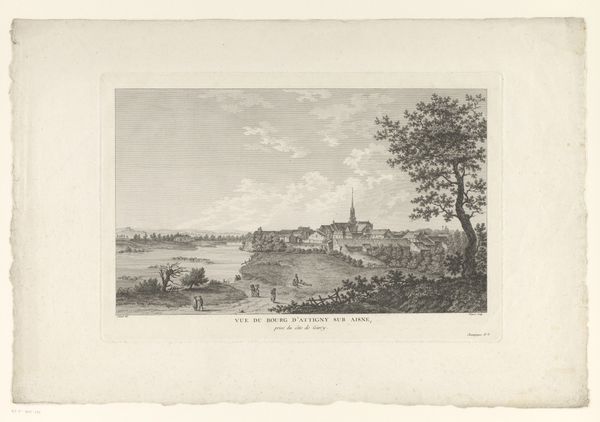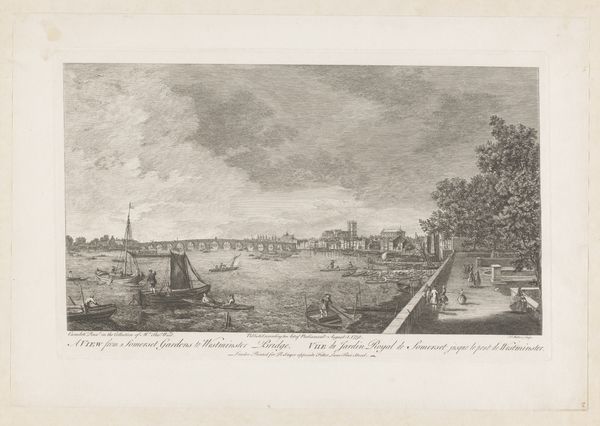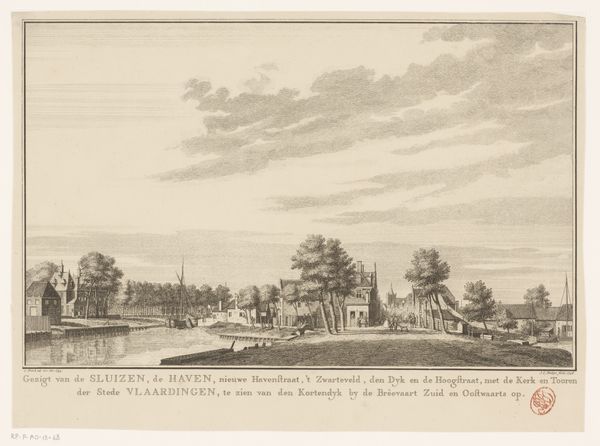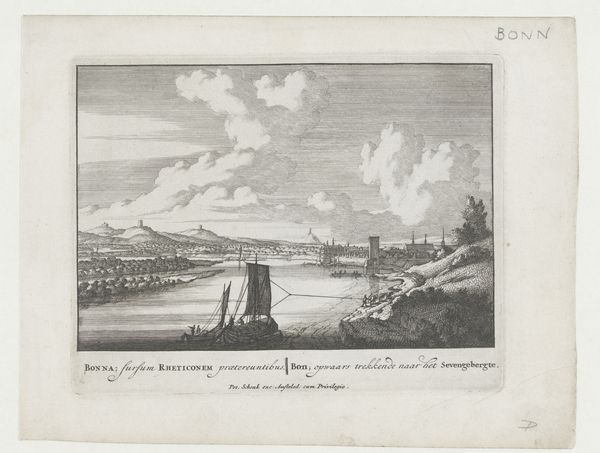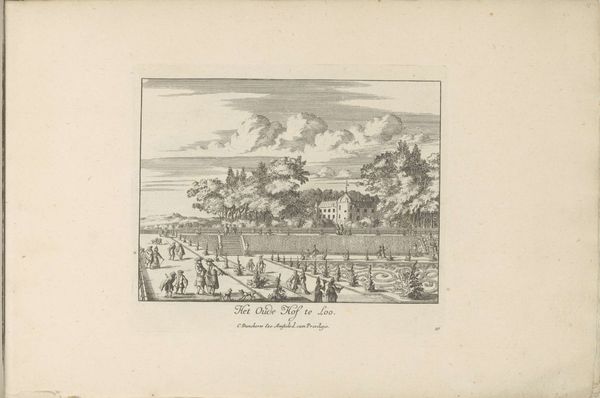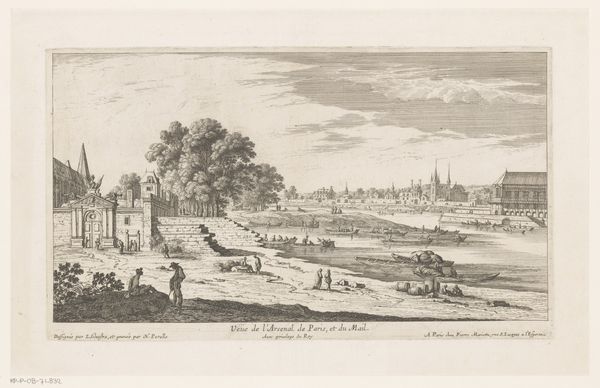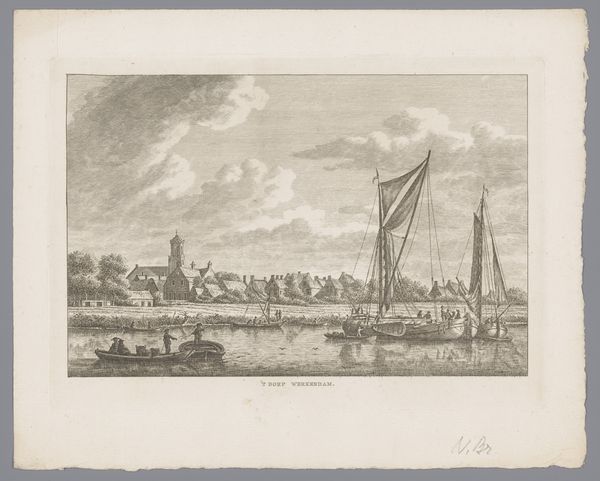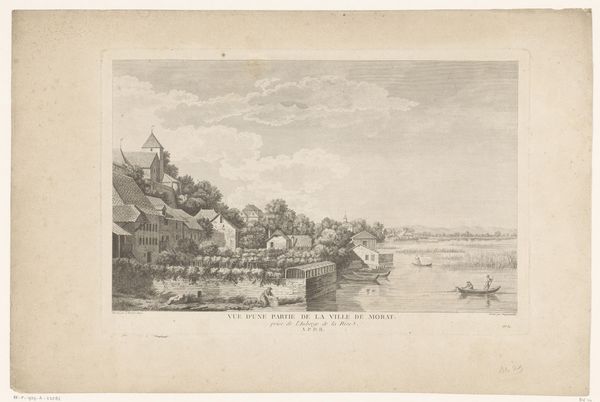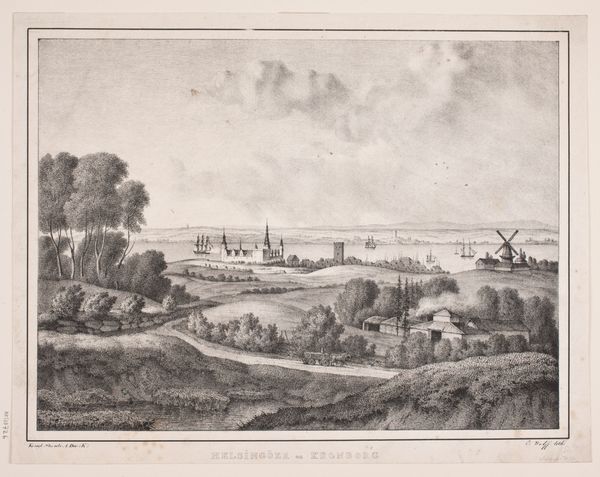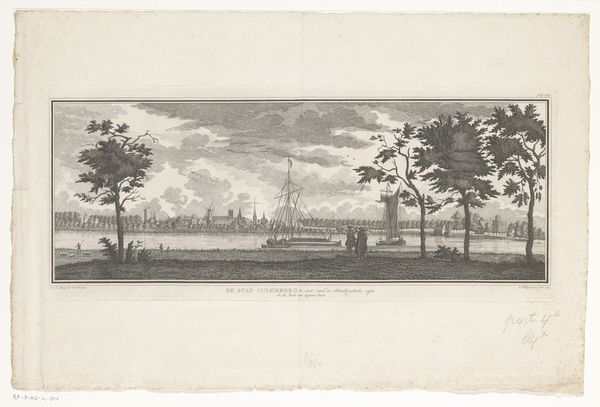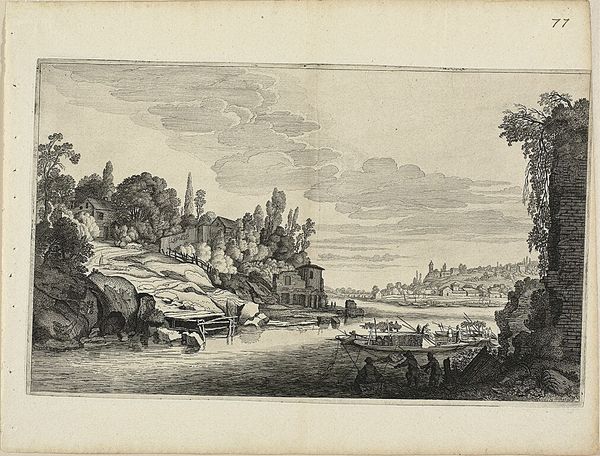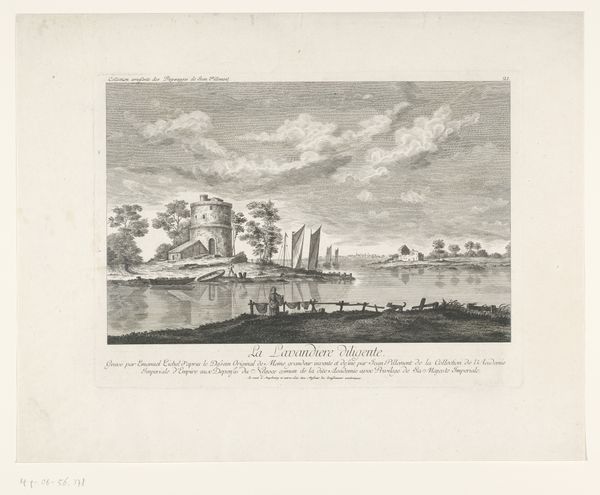
print, engraving
#
baroque
#
dutch-golden-age
# print
#
landscape
#
river
#
engraving
Dimensions: height 131 mm, width 171 mm
Copyright: Rijks Museum: Open Domain
Curator: This engraving, "Gezicht op Mainz," dating from around 1694-1697, by Pieter Schenk, offers a captivating prospect of the city as viewed across the river. The original artwork can be found at the Rijksmuseum. Editor: It's interesting how the river dominates the scene, nearly splitting the composition in half. I find it compelling, almost like a mirror reflecting the structures and social stratifications within the city. Curator: Yes, notice how Schenk orchestrates a visual dialogue. The cloud formations echo the city skyline, the textures interplaying between the solidity of the built environment and the fluidity of the water. Consider the intentional contrast here. Editor: The choice of engraving as a medium emphasizes process. This wasn't just a captured moment; it's crafted, produced, made to be replicated, shared, maybe even consumed as a collectible item or a way for folks to share their travel experiences. It brings to mind who had the privilege of commissioning and accessing such imagery at the time. Curator: Exactly, engraving enabled dissemination, but on the other hand, it offered the opportunity for Schenk to engage with the interplay of light and shadow to subtly guide the eye. He’s not simply documenting but constructing a very particular narrative about Mainz. The diagonal lines created through his cross-hatching add texture, drawing attention to form and shape. Editor: For me, seeing these kinds of reproducible prints asks a larger question. Was Schenk part of a craft network, selling cityscapes of places on The Grand Tour to wealthy aristocrats to consume, reinforcing societal power dynamics through art itself? It also leads to how we value art in present times. Curator: Such close looking prompts deeper thinking beyond aesthetics, right? It's as if Schenk anticipated these multilayered readings of form and content across time. Editor: I think thinking about materiality brings questions about labor to art historical analysis. This piece brings the human, class, and production element together with an artist's view. Curator: Precisely, both the close reading and examination of material processes contribute significantly to our encounter with Schenk’s world, don't you think?
Comments
No comments
Be the first to comment and join the conversation on the ultimate creative platform.
